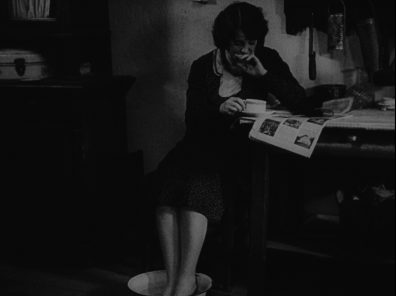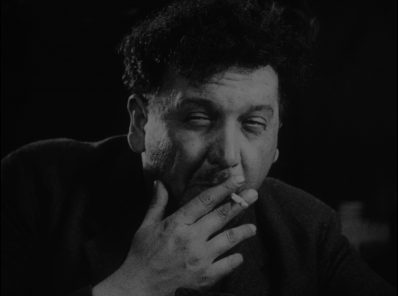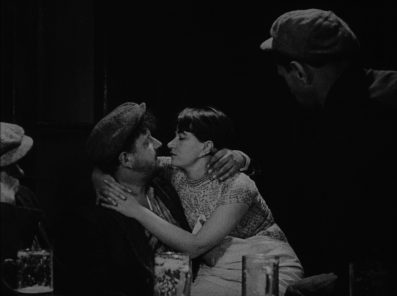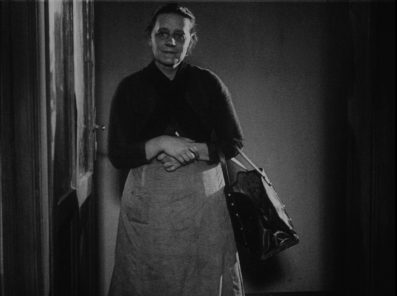In the context of early Czechoslovak cinematography, this raw Czech-German drama with an international cast is a thematically and stylistically unique work. Among other things, it proves that increased social awareness wasn’t typical only for Soviet filmmakers of the era.
Leftist journalist and film theorist Carl Junghans (1897–1984) began his career in the film industry as an editor and subtitle translator. In 1925, affected by the increasing socioeconomic instability of the Weimar Republic, he wrote the script for a social drama titled The Washerwoman (Die Wäscherin) about seven days in the life of a poor working woman. Junghans adopted the framework of the story from Émile Zola’s novel about the destructive effects of alcohol, L’Assommoir.[1]
In the following years, Junghans tried to find a producer for his script in his homeland, but to no avail.[2] In 1929 he therefore set out to Prague where he offered his work to actor Theodor Pištěk (1895–1960). Pištěk, who often portrayed jovial and good-natured fellows, such as Kondelík[3], shared Junghans’s left-wing views and for once wanted to portray a serious character and step out of the shadow of typecasting. He read the script and accepted the role of an uncouth drunkard with serious problems with personal hygiene and self-control issues (in one suggestive scene, his wife must pacify him with a meat cleaver in her hand).
In the fall of 1929, Junghans and Pištěk agreed on a joint production and began to raise the necessary funds. Such is Life (Takový je život, 1929) was produced by Starfilm, a company founded for this purpose by Pištěk with Václav Bukáč. The whole film was shot in just 24 days: 14 days in the studio Na Kavalírce and 10 on location in Prague. However, the film’s budget increased from the planned 80,000 crowns to 200,000, so the production had to continuously raise money. Pištěk, whose financial situation was further worsened by a devastating fire at the studio Na Kavalírce, where he was a co-partner, didn’t pay off his debts to creditors until 1941.
The film’s German premiere was held in the Ufa-Theater in Berlin in March 1930. German reviews were very favourable. The Berlin evening paper Tempo described it as “one of the most brilliant films of recent times.”[4] According to Filmkurier, it was a “perfect work”[5] and Prager Abendzeitung wrote about a film “which will captivate the viewers from the very beginning and enthral them in slowly untangling games of fate, making them hold their breath in suspense.” The review continued in an equally poetic style: “Only rarely is the theatre as silent, only rarely is the thrill so uniform. During the entire film, there was a cloud over the audience ready to burst in streams of tears.”[6]
To describe the tragic story of a poor washerwoman forced to support her husband, a debauched drunkard, and her daughter who lost her job as an ‘uncensored’ look at the life of lower social classes wasn’t entirely accurate. After the film was submitted to the Czechoslovak Ministry of Labour in 1930, it was indeed censored. Five members of the censorship advisory board decided that the film couldn’t be screened without cutting a few scenes.[7] And even without those scenes, Such is Life was classified as R-rated and no one under 16 was to be admitted to see it.
Only after enthusiastic German reviews and Pištěk’s lobbying did the film have its Czechoslovak premiere, on 9 May 1930, in the smaller Prague theatres of Flora, Koruna and Roxy. In his review for Večerník Práva lidu, Josef Trojan pointed at the possible reason why such a dismal film didn’t attract so many viewers: “As unnecessarily illustrative as the film is, its overall tendency is also fake as in a time in which we are governed by pessimism it’s really not necessary to emphasize it by portraying a tragedy about a drunk labourer.”[8] The audiences were not so thrilled either and preferred a new attraction – sound film. The naturalistic drama screened in half-empty halls and was pulled from the theatres after a week.
The praise by leftist authors from the Film-photo group of the Left Front was of little use. The creation of such class-conscious work from the life of manual labourers was welcomed by Jiří Lehovec in Národní osvobození (“It would be a shame if this film wasn’t successful with our audiences”)[9] and Lubomír Linhart in Večerník Rudého práva (“Pištěk proved that he’s capable of much more than he’s allowed to by dull librettos of Czech films”).[10]
The film had received a newly recorded score by Zdeněk Liška, a foley used for dramatic purposes and a spoken introduction and was to be run in the theatres again in 1958. But because of problems with the sound, the Central Film Lending Office couldn’t offer the icing on the cake in celebrating 60 years of Czech cinema.
The first sound copy of the film was finished in May 1959. Four months later, Such is Life, accompanied by a short documentary film titled Leonardo da Vinci, returned to the theatres. This time, with a much more extensive promotional campaign than it received in 1930. The distribution list assumed interest by “demanding viewers.” There were enough such viewers not only in Czechoslovakia but also abroad. In the following years, Such is Life attracted interest from the British Film Institute, Cuban Filmotheque, New York’s Museum of Modern Art and the Montreal Expo visitors.
Under the direction of Elmar Klos, sound was added to the oldest copy of the film before it was censored. Also new subtitles were created. In comparison to the old subtitles, the new ones are just chapter titles. Junghans saw the restored version in 1964. He praised the quality of Liška’s music but expressed his discontent with some of the motives (e.g., brass music). The National Film Archive used the same copy for digitally restoring the film this year.
The second version of the film naturally had a different framing than the original. The newspaper wrote about a celebration of the simple life of a proletarian woman which should be viewed by younger audiences as a testimony about a kind of life they were fortunate not to know. The period press put Such is Life next to social-realist dramas such as Dawning (Svítání, 1933), Battalion (Batalion, 1937) and People on the Iceberg (Lidé na kře, 1937), which events such as “The Beginning of Proletarian Art in Central Europe” presented as first seeds of a progressive tradition followed by post-war socialist artists.
In addition to the naturalistic portrayal of the environment and restrained performances by Pištěk and Russian actress Vera Baranovska (1885 – 1935)[11], the film is captivating thanks to its dynamic editing visibly influenced by revolutionary films by Soviet montage theory popularisers (for instance, the sequence taking place at Charles Bridge and the scene of a lady dancing on a pub table). It was the effort to avoid limitations of the heavy sound equipment along with limited financial resources that made the authors of Such is life decide to make their film silent.
After a short stint in Moscow, where he was invited by his Russian colleagues thanks to the remarkable quality of his suggestive drama, Junghans started making a sequel to Such is Life titled And Life Goes On (A život jde dál) in a Czech-German co-production. The production started in summer 1933 near Split. But just like during the production of the first film, the director had to struggle with a lack of resources which in this case proved fatal. After disagreements with the producers and some members of the staff, Junghans stepped away and the film was finished without him.
Martin Šrajer
Notes:
[1] Even though alcoholism isn’t the dominant motif, after its second premiere in 1959, Such is Life was included on the list with a warning against alcohol addiction.
[2] He was close to signing a contract with the company Prometheus uniting leftist filmmakers and collaborating the German Communist Party. But Junghans refused to change the film’s ending. Prometheus wanted the film to end with a demonstration. It’s probably coincidence that the company produced a film with a similar theme Mother Krause’s Journey to Happiness (Mutter Krausens Fahrt ins Glück, 1929).
[3] Kondelík was a character from the novel Otec Kondelík a ženich Vejvara by Ignát Herrman, which served as a basis for popular comedies.
[4] Brož, Jaroslav, Frída, Myrtil, Junghansův Takový je život. Film a doba, no. 1, 1969, p. 32.
[5] Sedm klasických filmů světové kinematografie. Prague: Československý státní film, 1956, p. 4.
[6] Ibid.
[7] In the 1st episode, they cut the scene where a manicure salon visitor touches the manicurist’s knee under the table and a scene in which the washerwoman’s husband hugs a waitress on a sofa. In the 2nd episode, they cut a scene in which the man, after returning from a pub, takes a chamber pot in his hands, and in the 3rd episode, it was a scene in which a drunk man goes to the toilet instead of home. In the 5th episode, it was a scene with a doctor writing the number 150 on a piece of paper, then showing it to a girl and throwing it away.
[8] Brož, Jaroslav, Frída, Myrtil, Junghansův Takový je život. Film a doba, no. 1, 1969, p. 27.
[9] Ibid, p. 28.
[10] Ibid, p. 28.
[11] The actress using Stanislavsky’s method gained renown thanks to the leading role in Pudovkin’s Mother (1926). After emigrating from Russia, she worked in Czechoslovakia, Germany and France, where she died in 1935.




